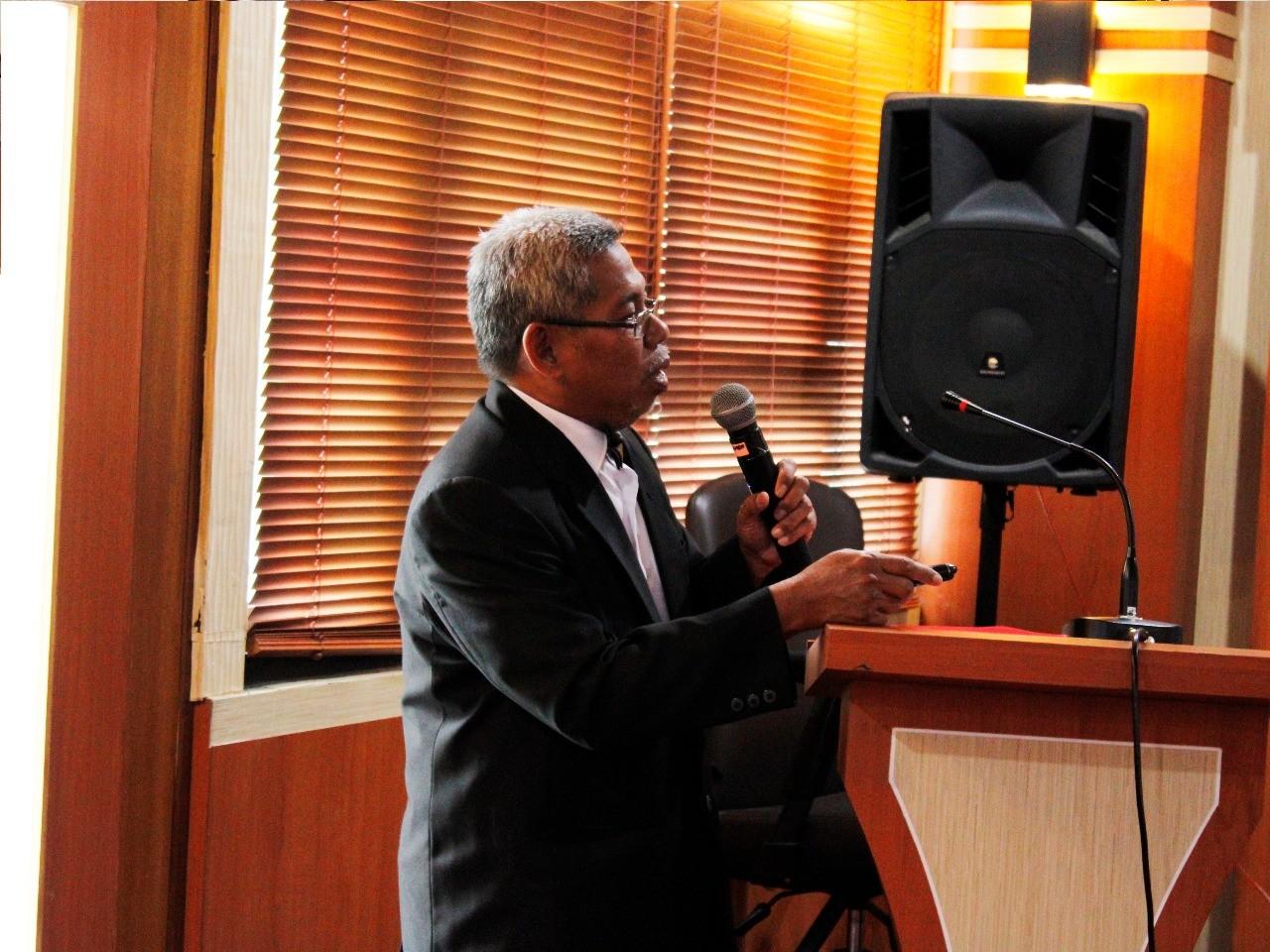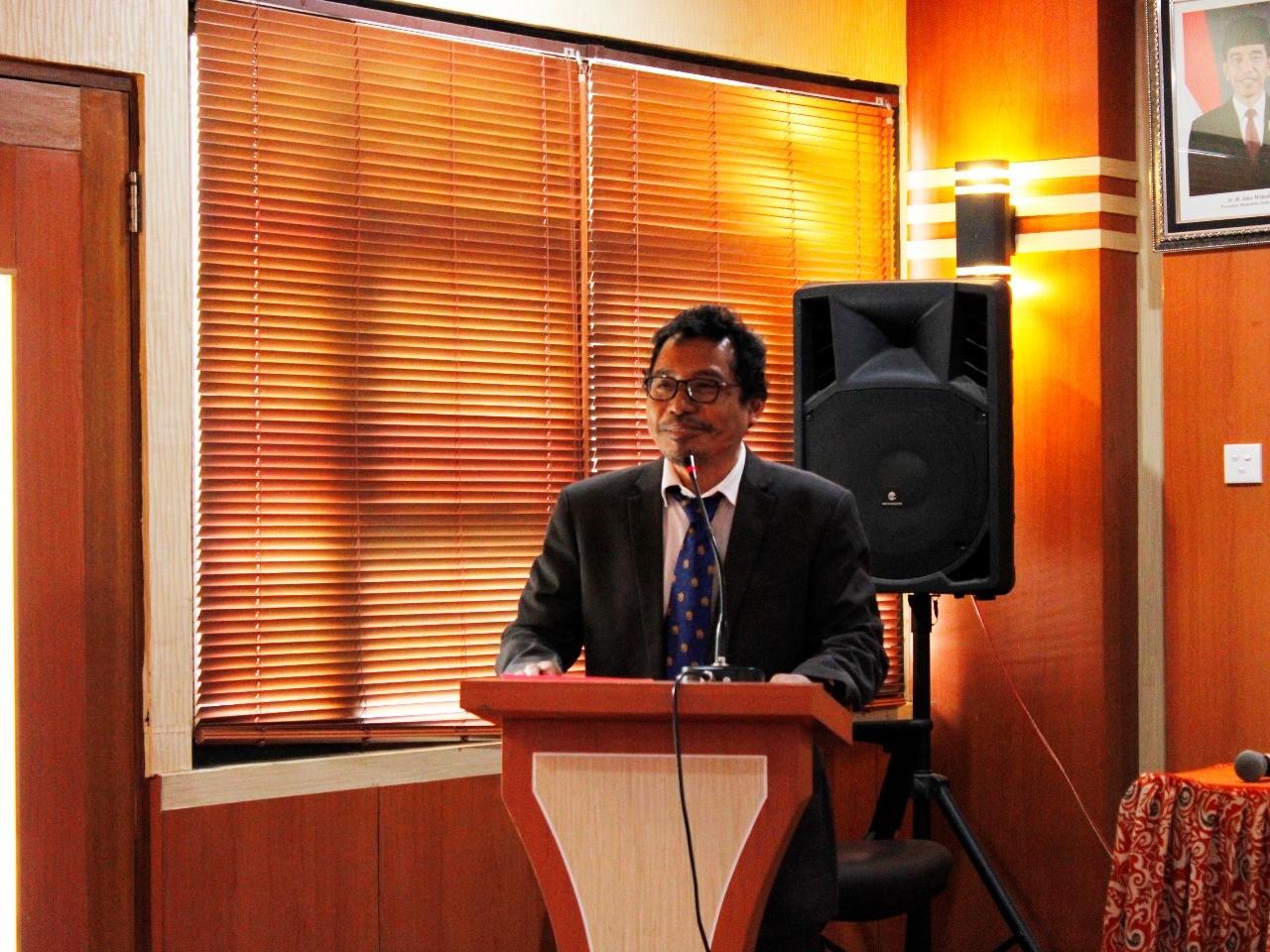Designing Renewable Energy with Manganese Dioxide, Achieve Doctorate at ITS
 Dr Drs Mahmudi MSi when presenting his dissertation at a doctoral promotion session
Dr Drs Mahmudi MSi when presenting his dissertation at a doctoral promotion session
ITS Campus, ITS News – The depletion of energy reserves on earth requires people to innovate on creating alternative energy for their survival. Reflecting on this, Dr. Drs Mahmudi MSi in his dissertation examined the manganese dioxide (MnO2) nanoparticles as catalysts using the electrolysis method, to make batteries as alternative energy in the future.
In his presentation at the Open Session of Doctoral Promotion in the Chemical Engineering Department of Institut Teknologi Sepuluh Nopember (ITS), Wednesday (20/2), Mahmudi, researching with his promoter Prof. Dr. Ir Heru Setyawan MEng explained that the manganese was electrolyzed into a catalyst. Then the catalyst can be used to reduce oxygen to water.
According to Prof. Heru, the idea of creating this energy alternative is based on the phenomenon of the world’s conventional energy depletion and lack of access to energy in remote areas of Indonesia. This anxiety inspired him to be able to create batteries with catalysts that are easily found in Indonesia, but economically cheap. “Previously there had been a catalyst innovation with platinum active ingredients, but the price was expensive so they had to look for other active ingredients,” said the First Vice-Rector for Academic and Student Affairs of ITS.
The idea was then brought by Mahmudi who was also a lecturer at Malang State University (UM) for further research. With the dissertation title Synthesis of MnO2 Nanoparticles with Electrolysis Methods and their Application, it turns out this research did take a while. For approximately 13 semesters of his doctoral studies, Mahmudi continued to experience trial and error. “This long research period is due to the not yet maximum catalyst produced,” said the man born in Jombang, April 20, 1959.
The variable highlighted by Mahmudi to produce an effective and efficient catalyst is the degree of acidity (pH). By using a pH of 0.2 this battery produced a considerable amount of energy in a short time. “Before that, I also tested with a pH of 0.175 and the synthesis process took more than one day, and when using pH 0.2 it only took 15 minutes to produce the same amount of energy,” he said.
Mahmudi said that to get a pH of 0.2 wasn’t easy. In his journey, Mahmudi tried to use various nominal numbers and experienced trial-and-error. Although the results obtained were satisfactory, Mahmudi said that this research would continue to maximize the quality of the catalyst produced. (RAM / MIC / HUMAS ITS)
 Prof. Dr. Ir Heru Setyawan MEng as the promoter when giving a speech
Prof. Dr. Ir Heru Setyawan MEng as the promoter when giving a speech
Related News
-
ITS Collaboration with BPBD East Java, Launching VR Disaster Simulation
ITS Campus, ITS News — Supporting anticipation of disasters and continuing to educate the public, Institut Teknologi Sepuluh Nopember
February 25, 2019 14:02 -
Supporting the Implementation of Innovative Ideas, ITS and IYSA Hold International Competition
ITS Campus, ITS News — Institut Teknologi Sepuluh Nopember (ITS) has once again proven its commitment to supporting the
February 25, 2019 14:02 -
ITS Maintains Informative Qualification for Five Consecutive Years at KIP Awards
ITS Campus, ITS News — Institut Teknologi Sepuluh Nopember (ITS) has once again successfully maintained its Informative Qualification predicate
February 25, 2019 14:02 -
ITS Strengthens Smart Eco-Campus through UI GreenMetric 2024
ITS Campus, ITS News — Institut Teknologi Sepuluh Nopember (ITS) has once again demonstrated its commitment to environmental concern
February 25, 2019 14:02
